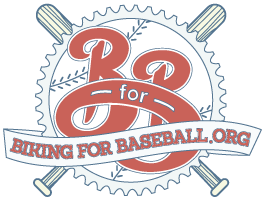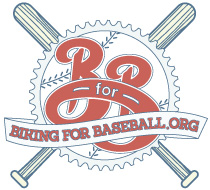Rookie of the Year
The Rookie of the Year is a difficult award to categorize. We know that the winner doesn’t usually play for contending teams. Most contenders have veteran lineups, likely because they’ve traded away their top prospects to acquire the pricey veterans. The Rookie of the Year winner isn’t always guaranteed future success either. Of the 128 Rookies of the Year, only 14 have been named to the Hall of Fame. That number is sure to increase because both Derek Jeter and Albert Pujols seem to have the Hall of Fame locked up, and other players such as Hanley Ramirez, Ryan Braun, and Justin Verlander are 10 years of MVP caliber performance away from building their Hall of Fame case. Ichiro was a ROY, but has he played in the major leagues long enough to establish Hall of Fame credentials? That’s a debate for another day.
Some winners from the past 20 years or so who failed to live up to the hype include: Bob Hamelin, Ben Grieve, Kazuhiro Sasaki, Angel Berroa, Scott Williamson, Jason Jennings, and Dontrelle Willis. That is almost one fourth of the winners the past 20 years who have not had a productive major league career. Most ROY winners over that time period have become perennial All-Stars, while others are serviceable major leaguers. Obviously, my analysis is very rough and arbitrary, but the point is that the ROY award does not always guarantee future success.
The Rookie of the Year is also just an odd award because there are players who have spent the entire season with their major league club competing for the award with players who were called up last month. When the main method to evaluate rookies is by counting statistics, such as HR and RBI, the players with more games played and plate appearances have a distinct advantage. Even rookie relief pitchers have an advantage because they are not generally mid season call-ups. Andrew Bailey and Neftali Feliz have won the past two AL ROY respectively. They’ve had the benefit of spending the entire season appearing in games in relief.
In other words, service time plays a HUGE role in deciding the ROY. Even though Desmond Jennings didn’t play a game until July 23, he is in the ROY discussion with players who have 300 more plate appearances than his 193 plate appearances. In the last 30 years, only one position player has won a Rookie of the Year award with fewer than 350 plate appearances. It will be difficult for Jennings to make up lost time, although he is batting at a torrid pace. He has a .303 average with a .392 OBP and a 162 OPS+. He has 8 home runs in 43 games, which equates to about 30 homers over a full season. Why didn’t the Rays call him up two months earlier? Its not like Sam Fuld was hitting the cover off the ball. Maybe he could have helped the Rays keep pace with the Yankees and Red Sox in the division race.
Players who were called up to the majors late in the previous season can still win the award the next season, which is just one more confusing factor to the ROY. Eligibility requirements for the ROY award is formally defined as a player with less than 130 AB, and a pitcher with less than 50 innings pitched, or anyone with less than 45 on any major league roster, all in previous seasons. Brett Lawrie has played great the past month since being called up, but if the season ended today he would still be qualified as a rookie next year.
With all that said, I’ve narrowed down the list of potential candidates. There are a surprising amount of rookie starting pitchers who have had very solid seasons. We are getting to that point in the season where managers will start to shut them down for the year, but I am including a table to compare each of them. The WAR statistic is derived using Fangraph’s formula.

This year’s ROY race seems very tight, and it will likely go down to the season’s final weeks. I think Kimbrel has the NL ROY locked up, but there are about 5 players I can see winning in the AL. The race will definitely be more exciting than the division races. It should be a fun last few weeks.


